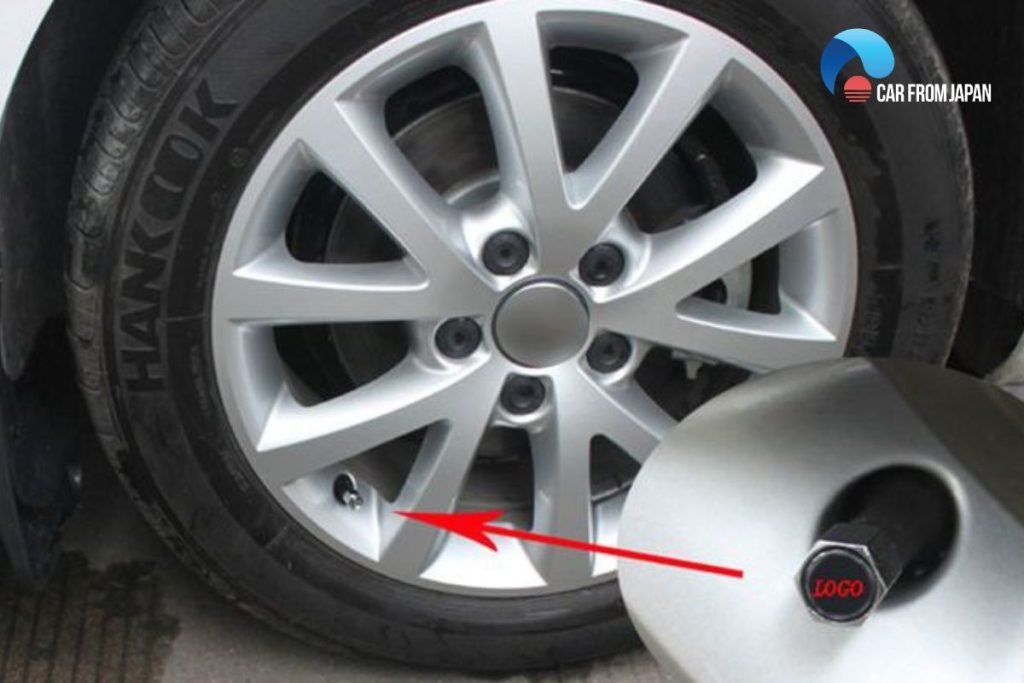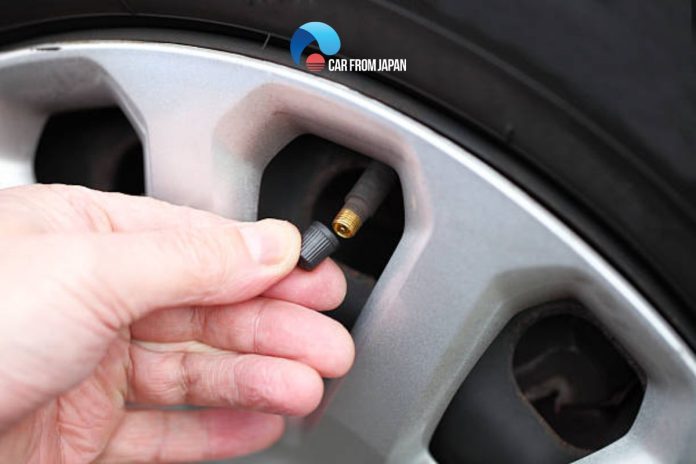As we know, every detail and part of the car is designed with precision and has a purpose, one of them is a little valve cap.
What is the function of this part? Does it keep the air in your tire or do something else? Is tire air cap missing a big problem?
All these concerns will be answered in below article to help you better understand.
Contents
- Are Tire Valve Caps Necessary?
- Tire Air Cap Missing: Is It A Big Problem?
- How To Replace The Tire Valve Caps?
- FAQs on Missing Tire Air Cap
- Could missing valve caps affect TPMS (Tire Pressure Monitoring System) sensors?
- Do tire caps help in extreme weather conditions?
- Are all valve stem caps created equal?
- Can missing air caps attract tire thieves or vandals?
- Is it safe to replace a missing cap with one from a different tire or random set?
- Could your tire air cap falling off be a sign of vandalism or tampering?
- Closing Thoughts
Are Tire Valve Caps Necessary?
Valve caps can be made of high-quality plastic, rubber, or metal to prevent air leakage and make the valve tighter. So what if there is no cap on the tire valve?
The answer is: it is not necessarily an urgent need but the tire valve is there for a reason.
The valve cap is engineered with a small rubber seal inside to prevent debris from coming into your tire valve. This cap also helps protect your valve stem.
However, people easily forget to put it back on after they take it off the tires. So what has ended up happening is after several years, grimes start gathering in and cause bad effects on your tires.
Don’t forget to turn the valve cap as soon as the pressure is filled!

Tire Air Cap Missing: Is It A Big Problem?
Valve caps are not simply little pieces of plastic or metal caps to help the valve look good. It is created to protect the Schrader valve, a valve stem into which the valve core is threaded to trap air or nitrogen in car tires.
You may worry that air will come out of tires or not able to drive safely if the cap gets lost. Is it true or not?
Do your tires lose air without a tire pressure cap?
Although the valve cap plays an important role, it does not affect the air circulation in the tire. The main job of this cap is to protect the valve stem from dirt and moisture.
There are many reasons that can make your car lose air over time. We will make clear these problems:
Improperly function of the valve stem
Your tire is brand new, it doesn’t have any nails on it, but your tires still lose air. Let’s check the valve stem.
A damaged valve is often the cause of an air leak in your tires. Over time, the valve stem will deteriorate and cause the tire to slowly reduce from 1-3 PSI.
Fluctuate temperature
Air molecules will become denser due to cold weather, leading to a drop in tire air pressure. Your tires will lose 1 PSI for every 10°F drop in temperature.
Nail in tires
When traveling on the road, the accident of the tire being rolled with a nail or sharp object will cause a lot of trouble for your car. Is it also the reason why your tire loses air?
Typically, the tire will drop from 2 PSI-3 PSI in a day. The way to handle nailed tires is quite diverse, can be temporary improvisation or long-term patching.
When you inspect the entire radius of your tires, make sure you don’t have anything that has punctured your tires whether it’s a sharp rock, a screw, or a nail.
The wheels are pulled away from your tires
Your wheels are engineered to fit the car tires. When the wheel is bent or damaged, it can cause an air leak.
Even pressing on the rubber and causing a flat tire. Curved wheels will also cause vehicle vibration, damaging the tire bead.
Read More: How Often Should You Put Air In Your Tires – Learn Here
Can you drive the car safely without the tire valve caps?
It’s good news for you because you still can continue driving your car a certain distance if the air cover is gone.
While you may drive without a tire pressure cap, we recommend that you should replace it when you get the chance to avoid the dust and debris that can get into your tires will affect the quality of the tires.
Fortunately, air valve covers are easy to replace and can be found at auto parts stores. You will have some options when choosing the valve cap: plastic or metal. In our opinion, you should use plastic.
The metal cap can corrode over time and stick to the stem, and it can be extremely difficult to remove when you need to refuel.

How To Replace The Tire Valve Caps?
As we know, tires are the part that always must connect to the road surface. So valve caps on the tires can be worn and threaded due to road bumps or other obstacles.
We need to change this cap overtime. Instead of going to the repair shop, we can share with you some simple steps to do it at home.
Step 1: Lift your car
Use the rack stand to lift your car and rotate the car tires until the cap is upside down in your view.
Step 2: Remove the tire valve cap
This step can be difficult for some drivers since the caps sometimes can be stuck to the valve stem. So it’s hard for you to take them off.
To handle the problem, you can spray the tire lubricant on the cap valve and after that, you can easily remove the cap. Another way, you can take a pair of pliers and keep the valve as steady as you can.
After that, you use another plier and twist the cap until it’s free. Usually, when you remove the valve cap. You’ll find that there’s a lot of junk in the bottom and you need to clean it up.
You can use a screwdriver and scrape it out. Make sure no debris is on the inner portion of your cap and go ahead and re-secure this cap.
Step 3: Replace with a new one
After finishing removing the valve cap, put the new one back on. You can take some and slide grease on the cap before you install it into the valve stem.
It’s quite a simple process, it just only takes you a few minutes to do it. However, if you still have trouble in the replacement process, you can go to the mechanic to have support.
Related Post: How to Complete a Tire Valve Replacement Job
FAQs on Missing Tire Air Cap
Could missing valve caps affect TPMS (Tire Pressure Monitoring System) sensors?
Yes, especially if grime builds up in the valve and causes it to clog or stick.
If pressure becomes uneven, it might trigger false alerts or even cause sensor errors over time.
Do tire caps help in extreme weather conditions?
Definitely. In freezing climates, they prevent water from entering the valve stem and freezing, which could damage the valve or cause sudden air loss.
In hot weather, they protect against dust and heat-related valve degradation.
Are all valve stem caps created equal?
Not really. Some are basic plastic, while others have rubber seals or are made of metal for better weather resistance.
There are even locking caps or pressure-indicating caps that change color based on tire pressure.
Can missing air caps attract tire thieves or vandals?
Interestingly, yes. Some thieves target vehicles missing valve caps, assuming other maintenance is also neglected, making the car an easier or lower-risk target.
Is it safe to replace a missing cap with one from a different tire or random set?
Mostly yes — as long as it fits snugly. However, mixing metal caps with rubber valve stems can lead to galvanic corrosion over time if not properly designed for compatibility.
Could your tire air cap falling off be a sign of vandalism or tampering?
Potentially. If you frequently notice missing caps, especially on multiple tires or repeatedly on one wheel, it could suggest tampering, especially in urban areas or parking lots.
Closing Thoughts
Although the tire valve cap is a small component, we can’t deny its importance, esspecially when it face tire air cap missing issue.
After checking your tire, you should spend a little time noticing the part to make sure it’s securely in place. Don’t forget to put this cap on the valve after you take it off to fill the air for your tires!
For more insightful Car maintenance tips, follow Car From Japan today!



